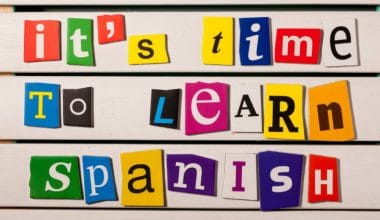This article contains the format on how to write a cinquain poem, the full guide, and all that it entails writing a cinquain poem.
Meanwhile, this table shows all we will discuss in this article.
Table of contents
What is a Cinquain Poem?
A cinquain – which, by the way, is pronounced “sin-cane,” not “sin-wane” – is a popular form of poetry due to its simplicity. It was established around 100 years ago by American poet Adelaide Crapsey and is similar to Japanese poetic forms like haiku and tanka.
In Cinquains, there are just five lines, with only a few words on each line, making them quite simple to write. As a result of the short lines between the first and last lines of this poem, which have just two syllables each, they end up looking like a diamond, similar to the poetic form called a diamante.
A cinquain tells a story in five lines by offering descriptive words, a narrative action (an event), a feeling triggered by that action, and a conclusion.
Read: How to Write a Diamante Poem | Full Guide with Templates
What is a Cinquain Poem format?
When writing a cinquain poem, always have in mind that there are various types of cinquains.
Here we have the Crapsey cinquain Format and the American cinquain Format.
A Crapsey cinquain has a more constrained structure than an American cinquain.
While an American cinquain must have a set number of syllables in each line, the Crapsey cinquain demands a certain amount of stressed syllables per line.
1. The Crapsey Format:
Crapsey’s cinquains utilized an increasing syllable count in the first four lines, namely two in the first, four in the second, six in the third, and eight in the fourth, before returning to two syllables on the last line.
In addition, though little emphasized by critics, each line in the majority of Crapsey cinquains has a fixed number of stressed syllables, following the pattern one, two, three, four, one.
The most common metrical foot in her twenty-eight published examples is the iamb, though this is not exclusive.
Lines generally do not rhyme. In contrast to the Eastern forms upon which she based them, Crapsey always titled her cinquains, effectively utilizing the title as a sixth line.
Format
Line 1 = 2 syllables (1 stressed);
Line 2 = 4 syllables (2 stressed);
3 = 6 syllables (3 stressed);
Line 5 = 2 syllables (1 stressed).
Here are Examples of a Cinquain Crapsey Poem:
RELEASE
With swift
Great sweep of her
Magnificent arm my pain
Clanged back the doors that shut my soul
From life.
TRIAD
These be
Three silent things:
The falling snow…the hour
Before the dawn…the mouth of one
Just dead.
SNOW
Look up…
From bleakening hills
Blows down the light, first breath
Of wintry wind…look up, and scent
The snow!
ANGUISH
Keep thou
Thy tearless watch
All night but when blue-dawn
Breathes on the silver moon, then weep!
Then weep!
2. American cinquain Format:
Some scholars define the line length of American cinquains by counting iambs or stressed syllables rather than by counting total syllables.
By this sort of counting, the proper line length of an American cinquain would be 1-2-3-4-1 since it would contain one iamb in the first line, two in the second line, and so on.
The right way to count the line length is ultimately a matter of interpretation, though, since Crapsey never specified the rules of the form she invented.
Format
Line 1 = 2 syllables;
Line 2 = 4 syllables;
Line 3 = 6 syllables;
Line 4 = 8 syllables;
Line 5 = 2 syllables
Here are Examples of an American Crapsey Poem:
WATERMELON
“Watermelon
Juicy, sweet
Dripping, slurping, smacking
So messy to eat
Yummy”
Snow by Anonymous
“Snow
Lovely, white
Falling, dancing, drifting
Covering everything it touches
Blanket”
Castle By William Swink
“Castle
Strong, beautiful
Imposing, protecting, watching
Symbolizes wealth and power
Fortress”
Read: Online Poetry Classes For Beginners & Advanced | 2023
HOW DO YOU WRITE A CINQUAIN FOR KIDS?
The term cinquain describes a type of poem based on how many syllables each line has in it. A writer named Adelaide Crapsey created it in the early 20th century.
Here are a few steps you can follow to learn how to write cinquains:
- Think about what you would like to write about.
- Defining your idea by using words and phrases that relate to it.
- Consider what story you want to tell.
- Your words and phrases should be arranged in an order that tells your story, counting both syllables as you go.
1. Getting Your Feet Wet
Your first step is to choose a topic.
In other words, you must select something to write about for your cinquain. You can get ideas from any of the following:
- Write about something you don’t like
- Something you see around you
- Write about something that happens to you
While I enjoy listening to music, I can come up with a cinquain poem about it. This is convenient since the word “Music” has two syllables, so I can probably use this phrase as the first line of my cinquain. If your favorite thing is Rice, soccer, your mum, etc., you could also use “Rice,” “Soccer,” or “my mum” as the first line of your cinquain.
2. Idea-generation
It is important to brainstorm ideas about your topic once you know what you will write about. Put your thoughts down on paper and write as many things as you can relating to your topic. You are allowed to write your ideas on one piece of paper then write your poem on another.
For example, I know several things about Music, so I’ve put them down here:
- It is Magical.
- It is soothing.
- It’s beautiful.
- It brings emotion.
This is a collection of four ideas, but they aren’t a poem. To make them a cinquain, we need to arrange them to have five lines, and each line has five syllables.
3. A Syllabic Count
As you write each line, count your syllables with your fingers. If a line contains too many or too few syllables, consider changing a few words.
Having counted the syllables accurately, read the poem over to ensure it conveys what you intend. If it doesn’t tell what you want it to, you may need to change it some more.
Once you have finished your cinquain, reread it and count the syllables on your fingers to make sure you got everything correct.
4. Cinquain Storytelling
A good story is one of the characteristics of the best cinquains. Putting the title on the first line, the description on the second line, the action on the third line, the feeling on the fourth line, and the conclusion on the last line is an easy way to do this:
Title
- Subject
- Description
- Action
- Feeling
- Conclusion
These are not strict guidelines.
The typical structure of a cinquain poem consists of 5 lines:
- Line 1: 2 syllables.
- Line 2: 4 syllables.
- 3rd line: 6 syllables.
- Line 4: 8 syllables.
- Line 5: 2 syllables.
Each line is read aloud as follows:
- Line 1: one stress.
- Line 2: two stresses.
- 3rd line: three stresses.
- Line 4: four tresses.
- Line 5: one stress.
What are the different types of cinquain poems?
Here are the types of cinquain poems and how to write them.
1. Didactic Cinquain
Primary schools often use didactic cinquain poems to introduce their students to cinquain poems. These five-line poems use words rather than syllables and stresses.
1st Positioning/Line: ONE WORD; This Cinquain poem begins with one word (a noun, which is the poem’s subject).
2nd Positioning/Line: TWO WORDS (adjectives that describe line 1).
3rd Positioning/Line: THREE WORDS (-ing action verbs–participles–related to the subject in line 1).
4th Positioning/Line: FOUR WORDS (a phrase or sentence that relates feelings about the subject in line 1).
5th positioning/Line: ONE WORD (a synonym for the subject or a word that sums it up).
Didactic Cinquain poem example:
Snow
Lovely, white
Falling, dancing, drifting
Covering everything it touches
Blanket
2. Mirror Cinquain
A 10-line poem that consists of the original cinquain, after which the reverse cinquain appears.
- Line 1: 2 syllables.
- Line 2: 4 syllables.
- 3: 6 syllables.
- Line 4: 8 syllables.
- Line 5: 2 syllables.
- 6: 2 syllables.
- Line 7: 8 syllables.
- 8th line: 6 syllables.
- 9: 4 syllables.
- Line 10: 2 syllables.
Mirror cinquain poem examples
Soulful Husbandry
Two wolves
live in each of
us to make us what we
are, though we train them how to serve our goals.
They both
compete to make us what we are.
So train them well and choose
the wolf that you
will feed.
© Lawrencealot – February 20, 2014
3 Reverse Cinquain
Unlike traditional cinquain patterns, this one uses reversed syllable patterns.
Line 1: 2 syllables.
2nd line: 8 syllables.
3rd line: 6 syllables.
Line 4: 4 syllables.
5th line: 2 syllables.
Reverse cinquain poem examples
You are
My one in a million, you …
There is no one like you!
You complete me,
My ‘One’.
4. Butterfly Cinquain
The last line of the original cinquain is merged with the first line of the reverse cinquain in this 9-line poem.
Line 1: 2 syllables.
Line 2: 4 syllables.
3rd line: 6 syllables.
4th line: 8 syllables.
Line 5: 2 syllables.
6: 8 syllables.
Line 7: 6 syllables.
8th line: 4 syllables.
9th line: 2 syllables.
Butterfly cinquain poem examples:
Plastic Trees
Don’t like
fake plastic trees.
When one sets out to trick
the senses of someone they like
they ought
to learn to fake sincerity;
The real thing is the best
the plastic should
be real.
© Lawrencealot – November 16, 2014
5.Crown Cinquain
This is a sequence of five cinquains used to create one large poem of 25 lines.
Crown cinquain poem examples:
One in a Million
My love,
You are my all,
My heart, it beats your name,
All I can think about is you,
Darling.
You are
The sun, the moon,
And all that’s in between,
The person who lights up my life,
My all.
I am
All that I am
Because of you my dear,
I shine when I am around you,
My love.
Heaven
Lost an angel
On the day you were born,
I’m the luckiest girl alive,
In love.
Dear love,
You complete me,
There is no one like you!
My one in a million, you’re
The ‘One’.
Read: 13 Free Free Online Writing Classes in 2023 | Beginners and Pros
PRO-TIP on How to Write a Cinquain Poem
In poetry, you should give the reader a reason to continue reading, just like in prose or short stories. GRAB THEIR ATTENTION!!!
Poets can achieve this with striking images, thematically rich turns of phrases, or creative use of figurative language. An opening line can be used to introduce a character or plot device in a narrative poem.
A poem’s opening line serves the same purpose no matter the form: to draw the reader in and encourage them to read the entire poem until the very end.
FAQs on How to Write a Cinquain Poem
Cinquains are five lines long. They have 2 syllables in the first line, 4 in the second, 6 in the third, 8 in the fourth line, and just 2 in the last line. Cinquains do not need to rhyme, but you can include rhymes if you want to.
: Snow by Adelaide Crapsey
Because Adelaide Crapsey created the cinquain as a poetic form, the best example of a cinquain is a poem that she wrote titled “Snow.
cinquain (SIN-cain): an unrhymed poem consisting of five lines arranged in a special way. A cinquain is an example of shape poetry. Because of the exact number of words required for each line of this poem, a unique, symmetrical shape is created from interesting, descriptive words.





